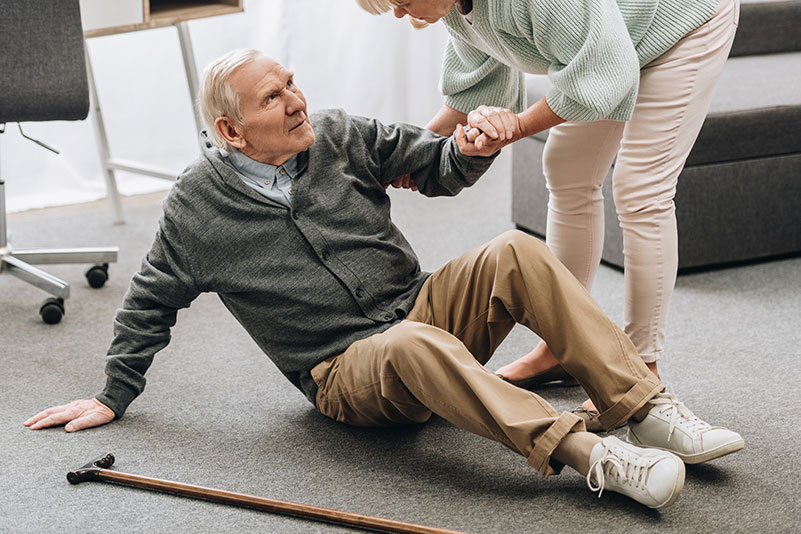Falls are common. Each year one in every three people aged over 65 will fall. This is caused by loss of balance and frailty plus side effects of medication or a medical condition that compromise balance e.g. glaucoma, macular degeneration and Parkinsons. The most common serious injuries are fractures and brain injuries. Falls can also result in a loss of confidence, which can lead to restriction of activity and a lower quality of life. How falls can be prevented?
A multi-disciplinary assessment and specific interventions can prevent falls in people with dementia and help maintain their independence for as long as possible: An accurate risk assessment is essential in deciding the person’s care needs and the risk of falling and subsequent injury so that they can receive appropriate support at home to reduce the risk of fall and reduce consequences when they do happen to occur, if home is no longer an option then a senior living in California may be the best for your loved on. Falls happen when there is a mismatch between our physical abilities and the immediate demands of the environment or activity being undertaken.

Appropriate training and supervision can enhance people’s awareness of potential hazards in the home environment and improve their skills to safely manage them for example using a walking aid appropriately and safely negotiating stairs and getting into and out of bed safely Identifying new and unexpected problems through regular assessment are important so that any adjustments can be made to prevent further harm from occurring. Falls become more common as we get older because as we age, there is a natural decline in muscle strength, balance and vision, all of which are important for helping us stay upright. Then also there are health conditions such as diabetes where there may be several risk factors contributing to a person’s ability to remain mobile without risk of a fall including poor sensation in their feet or being unsteady.
In addition to exercise to improve balance and strength, other actions that can reduce the risk of falls include talking to your doctor or pharmacist to review your medications and their interactions and ensure you are getting the best balance of benefits and risks; adjusting home and footwear/indoor and outdoor clothing for the level of traction needed and walking aids can be used ) where necessary to maximize safety inside and outside the home.

